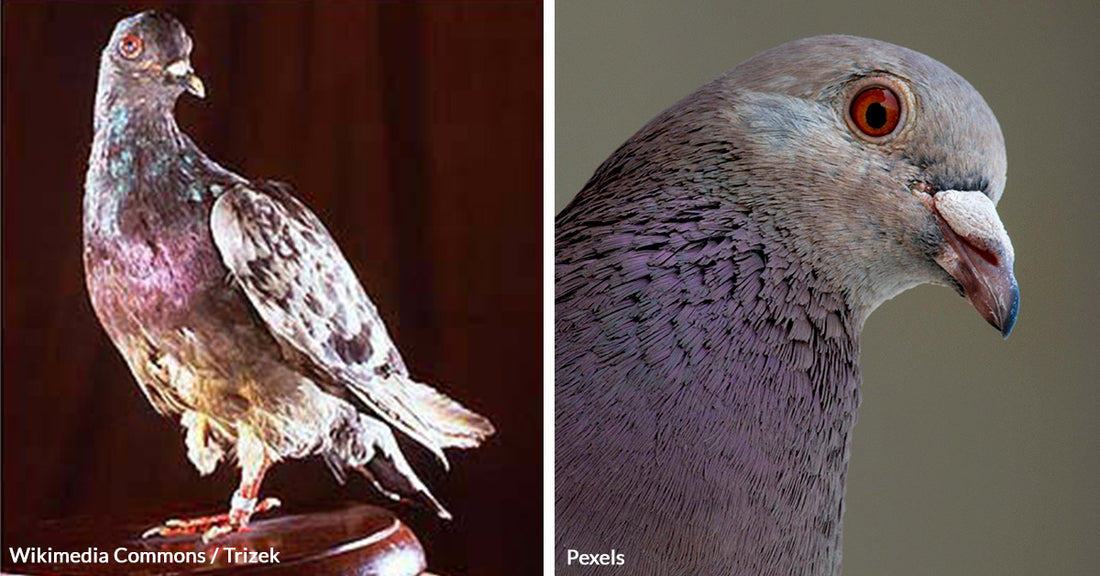How Winged Warrior Cher Ami's Flight Through a Bullet Storm Saved the 'Lost Battalion'
Matthew Russell
In the annals of military history, the valor and sacrifice of countless soldiers have been documented, celebrated, and remembered. Yet, not all heroes walk on two legs.
This is the extraordinary story of Cher Ami, a homing pigeon whose courage under fire during World War I saved nearly two hundred soldiers from the clutches of death.
Born in 1918 and enlisted in the U.S. Army Signal Corps, Cher Ami was one of 600 pigeons tasked with a mission that seemed almost impossible, yet pivotal to the soldiers he served alongside, according to the Natural History Museum of the United States Army.
 Photo: Pexels
Photo: PexelsCher Ami saved the "Lost Battalion" during the Meuse-Argonne Offensive.
The Mission
Cher Ami's journey begins amidst the turmoil of the Meuse-Argonne Offensive, a critical campaign during the final months of the Great War. Entrusted to the 77th Division, infamously known as the "Lost Battalion," Cher Ami was their final hope, their silent messenger when all other lines of communication had failed.
The Lost Battalion, comprising soldiers from the 306th, 307th, and 308th regiments, found themselves encircled by enemy forces, cut off from reinforcements and supplies, reports The United States World War One Centennial Commission.
A Flight Against All Odds
As the battalion withstood the relentless siege, their situation turned dire when friendly fire began raining down upon them.
With their numbers dwindling and options running out, Major Charles Whittlesey turned to Cher Ami, attaching a desperate plea to the bird's leg.
As the Smithsonian reports, the message was clear: "Our own artillery is dropping a barrage directly on us. For heaven's sake, stop it." What followed was nothing short of miraculous.
Despite being shot through the chest and losing a leg, Cher Ami rose from near defeat, flying 25 miles in just under thirty minutes to deliver the message that would cease the friendly fire.
 Photo: Pexels
Photo: PexelsCher Ami was part of the U.S. Army Signal Corps' 600 pigeons.
The Aftermath
Cher Ami's unwavering determination saved the lives of 194 men, earning him the prestigious Croix de Guerre from the French government.
General John Pershing, commander of the American Expeditionary Forces, recognized the pigeon's bravery, stating, "There isn't anything the United States can do too much for this bird."
The injuries sustained, however, were not without cost. As the World War One Centennial Commission reports, Cher Ami was left blind in one eye, and his leg had to be amputated. Yet, his spirit remained unbroken.
 Photo: Pexels
Photo: PexelsCher Ami flew 25 miles in under 30 minutes to deliver a message.
Legacy of a Feathered Hero
Cher Ami's tale transcends the boundaries of mere survival, touching the hearts of a nation. After his death in 1919 due to his war wounds, his body was preserved and presented to the Smithsonian Institution, where it remains on display, a testament to the courage of those who served in the Great War.
In 2021, a century after Cher Ami's death, DNA testing confirmed his sex as male, settling a long-standing debate about the pigeon's gender.
Cher Ami's story is a poignant reminder of the untold sacrifices made during times of war, not only by humans but by animals as well. It underscores the incredible bond between soldiers and their winged comrades, and the lengths to which both would go to ensure each other's survival.
The heroism of Cher Ami continues to inspire, a beacon of hope and valor in the darkest of times.

 Photo:
Photo: 